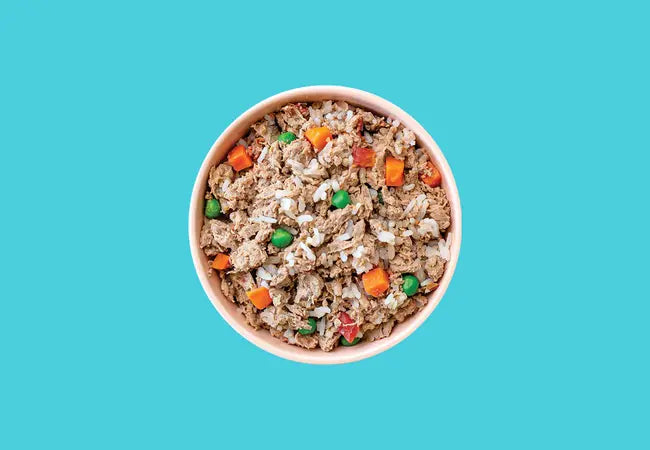What Is Human‑Grade Dog Food? A Vet’s Guide for 2025 🐶🍽️

In this article
What Is Human‑Grade Dog Food? A Vet’s Guide for 2025 🐶🍽️
By Dr. Duncan Houston BVSc
1. Defining “Human Grade”
Human‑grade dog food means every ingredient and the final product are legally edible for humans, and are processed, stored, and handled under federal food safety rules (FDA & USDA).
Unlike feed-grade pet food, which may use lower-quality ingredients and looser manufacturing controls, human‑grade must be made in facilities licensed and inspected as human food plants.
2. Why It Matters (or Doesn’t)
- Higher safety standards: Internal safety protocols mirror those used for human food, reducing contamination risk.
- Ingredient transparency: Brands often use whole, recognizable ingredients and avoid 4‑D meats.
- Higher digestibility: Fresh, minimally processed meals may lead to smaller stools and better nutrient uptake.
But remember: “Human‑grade” doesn’t automatically guarantee balanced nutrition. Products still need an AAFCO “complete and balanced” label—or equivalent tested standards—to be a healthy dog diet.
3. Benefits Observed in 2025
- Clear sourcing: fewer fillers, artificial preservatives, and better quality control.
- Improved coat and skin: higher bioavailable fats and proteins support skin health.
- Positive real-world feedback: Dogs, including picky eaters, respond well—e.g., The Honest Kitchen received praise for taste and digestion.
4. Limitations & Misleading Claims
- No regulated term: “Human‑grade” is voluntary; only legitimate if the whole food (not just ingredients) meets the standard.
- Not nutritionally superior: Nutrient balance matters more than processing grade.
- Cost and sustainability: Often pricier; using human-grade ingredients for pets may impact resource use.
5. Vet‑Style Recommendations
- Confirm AAFCO-complete and balanced nutrition for life stage.
- Verify processing: facility licensed for human food (FDA/USDA inspected).
- Examine ingredient list: named meats, quality fats, minimal fillers, or artificial additives.
- Evaluate labeling honesty: avoid vague claims like “human‑grade ingredients” if product isn’t fully human‑grade.
- Consider cost vs benefit: human-grade quality may be worth it for sensitive dogs or picky eaters.
6. Is It Right for Your Dog?
If you have a sensitive pup, picky eater, or want maximum peace of mind, a vetted human‑grade diet can be a great choice. For healthy dogs already thriving on quality commercial food, switching may not add measurable benefits.
Always consult your vet, and monitor weight, coat, stools, and energy after any transition.
7. Real‑Life Example
A senior Beagle with dull fur and intermittent loose stools switched to a vet-reviewed human‑grade fresh meal. Over six weeks, coat shine returned, stool firmed, and appetite improved—all while maintaining ideal weight. AAFCO compliance ensured balanced nutrition.
8. Ask A Vet Tools & Support
- 📱 Ask A Vet App – Download to access personalized diet reviews and transition guidance.
- 🎓 Nutrition Webinars – Learn how to read labels, evaluate processing claims, and switch safely.
- 🛠️ Woopf & Purrz Fresh Toppers™ – Add human‑grade supplements to conventional food for balance and taste.
9. Summary Table
| Aspect | Human Grade | Feed Grade |
|---|---|---|
| Processing standard | Human‑food facility | Animal-feed facility |
| Ingredient safety | Human-edible, inspected | May include 4‑D meats |
| Nutritional completeness | Must be confirmed | May or may not be balanced |
| Cost | Premium | Budget-friendly |
10. Final Takeaways
“Human‑grade” means higher processing safety and ingredient standards, but not guaranteed nutritional superiority. If you choose this route, validate AAFCO completeness, vet-fit for your dog, and watch their health response. Done thoughtfully, it’s a wholesome and trust-building option in 2025.
Need personalized advice? Visit AskAVet.com or download our app 24/7. Your dog deserves the very best—feel confident every meal 🐕❤️.






